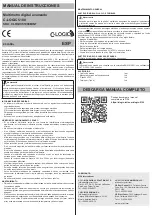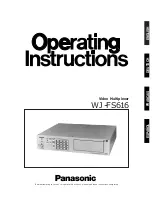
Introduction
and
Specifications
Introduction
1
1-3
Introduction
Fluke Biomedical's MPS450 Multiparameter Simulator (hereafter referred to as the
MPS450) provides a basis to train, evaluate, and perform preventive maintenance for
virtually all patient monitors found in the healthcare industry. This is accomplished with
multiple physiological simulations for ECG, blood pressure, respiration, temperature,
pacemaker, artifact, and arrhythmia conditions. The MPS450 is a lightweight, battery-
powered unit that is portable enough to test a patient monitor anywhere the monitor is
being used.
The microprocessor control of the MPS450, combined with extensive digital memory,
assures rapid test and verification of cardiac-monitoring medical equipment. All
simulation settings are read easily on the clear, built-in LCD (liquid crystal display), with
adjustable viewing “angle” (contrast). Tests and simulations can be selected quickly and
easily, by choosing menu selections, by using front-panel keys to enter numeric codes for
actions, or by using computer control.
A cross-referenced listing of MPS450 actions, numeric codes, and remote-entry
commands is available in Chapter 4: “Remote Operations.”
MPS450 Features
The MPS450 provides control over the widest array of testing parameters, while also
providing simplicity in design and user interface. A keypad enables the easy entry of
functions, parameters, and codes; easy-access jacks simplify quick connection to
monitoring devices.
The wide variety of abnormal ECG waveforms replicated by the MPS450 can be used not
only for testing arrhythmia-detection systems, but also for training medical personnel,
hospital administrators, and staff. The MPS450 can be used to teach techniques for
recognizing normal and abnormal conditions in the heart, lungs, and circulatory system,
as well as techniques for CPR and defibrillation/cardioversion. Cardiac physiologists can
learn how to interpret ECG waveforms; respiratory physiologists can learn
pulmonary/respiratory analysis techniques.
The groupings in Table 1-1 list the main categories of MPS450 functions. Each of these
function groupings is explained in a corresponding section.
Table 1-1. MPS450 Functions
Function Category
Function
Description
Normal sinus rhythm
ECG rate and amplitude
Adult / pediatric QRS
ST-segment elevation
ECG-artifact simulation
Pacemaker waveforms
ECG Functions
Pacer amplitude and
width
The MPS450 provides complete 3-, 5-, and
12-lead ECG simulation that includes seven
artificial pacemaker conditions. Normal sinus
rhythm is output over a range of heart rates
and voltage amplitudes.
ST-segment elevation is adjustable.
Summary of Contents for Biomedical MPS450 Operators
Page 6: ......
Page 13: ...Contents continued vii List of Figures Figure Title Page 1 1 MPS450 Patient Simulator 1 8...
Page 14: ...MPS450 Operators Manual viii...
Page 16: ......
Page 32: ...MPS450 Operators Manual 1 18...
Page 74: ...MPS450 Operators Manual 2 42...
Page 76: ...MPS450 Operators Manual 3 2...
Page 82: ...MPS450 Operators Manual 3 8...
















































